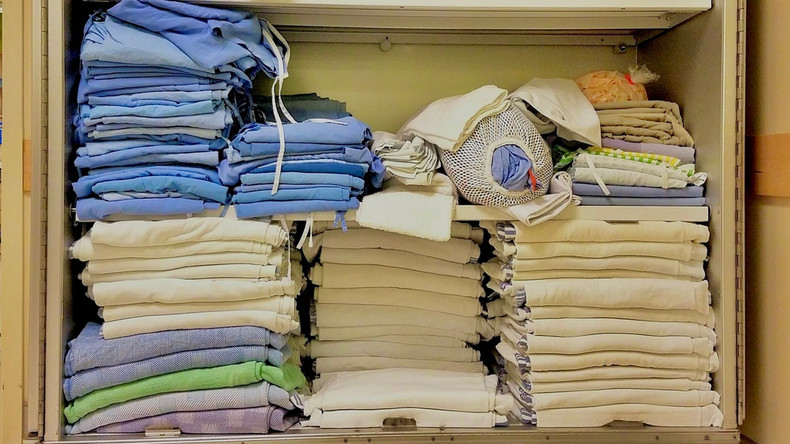
Our common goal as Surgical Processing Professionals is to prevent or reduce Surgical Site Infections (SSIs). When investigating SSIs, the findings and lab results may produce a specific culprit, but sometimes, there is not a definitive conclusion. SSIs can be a result of many factors which can elude the investigation of even the most thorough Root Cause Analysis (RCA). One factor may be surgical textiles. Surgical linen reprocessing can increase the SPD team's turnaround time and frustration. The delivery, sorting, inspection, de-linting, hair and debris removal, and product rejection steps all cost valuable productivity time and take the focus away from core functions. Please allow us to share some scientific rationale and cost-effective ideas that can decrease possible SSIs and increase staff efficiency.
Infection Prevention – Reducing SSI
SSIs are the most common and costly of all hospital-acquired infections (HAI’s), with an annual rate of 160,000 to 300,0001. This accounts for 20% of all HAI’s and occurs in an estimated 2% to 5% of patients undergoing inpatient surgery. They increase the patient’s hospital stay by 9.7 days and range in an increased cost of $3.5 billion to $10 billion annually.
Sterile Processing practices have regulations and detailed best practices when reprocessing linen. These recommendations can be found in ANSI/AAMI ST 65: Processing of reusable Surgical textiles for use in health care facilities.2 The linen we reprocess can create challenges in assuring the reduction of SSIs. A study (Sifuentes, et al. (2013)) was completed stating, “…sought to determine the effects of laundry and cleaning practices commonly used in hospitals”. The researchers found that 93% of the total number of towels tested contained viable microorganisms even after laundering3.
The Science of Surgical Textiles
Textiles are an important part of tray assembly and some SPD’s process hand towels for O.R. use. After use, biofilm can be entangled in the fibers, adding to the complexity of cleaning, and disinfecting. Linen sits for hours before reprocessing even starts. Microorganisms flourish in these ideal conditions (binary fission allows the population to double every 19.8 minutes). Another factor is linen providers’ compliance with the manufacturer’s instructions for use (MIFU’s) as far as cleaning temperature, number of reuses, and sterilization parameters.2 The linen may all look the same, but our audits have shown as many as six different manufacturers with six different MIFU’s. The final risk factor is the emerging science of microlinting as a cause of delayed healing in patients.4 We can only remove the lint that we see and the more a towel is reprocessed, the higher the risk of microlinting.
Here are some question to ask you linen provider:
1. Does the facility in which your contaminated surgical textiles are processed meet industry standards?
2. Is the equipment used to wash your surgical textiles properly maintained and does the washer anddryer meet the minimum temperatures for the linen you receive from them?
3. Does the area in which laundry is packed meet ANSI/AAMI clean area standards?
4. How often (documented) are the linen delivery trucks/carts cleaned?
5. Does all your linen have MIFU’s for sterilization? Are they being followed?
6. How many times can your linen be reprocessed according to MIFU’s?
7. What would be the results if we pulled 15 items from your linen delivery for microbial testing?
8. Can your linen pass a standard lint test?
Quality Assurance Measures
Quality Assurance (QA) in SPD is crucial to the prevention of SSIs. Many times, the linen is delivered to the department pre-assembled. Sterilizing any item without inspecting it increases the risk of a defect. ANSI/AAMI ST79 recommends inspecting medical devices “because many reusable medical devices are manufactured in an environment in which bioburden is not rigorously controlled.”5
Although many laundry facilities are processing linen well, even certified laundry facilities may not have a documented QA Program or MIFU’s. This leaves us with no proof of compliance. SPD’s are ultimately responsible for oversight of linen quality, often without the tools nor the time to manage provider performance.
Cost-Effective Solutions
After completing an RCA, one possible solution for textiles may be converting to single-use linen. Using reprocessed linen can be costly when considering the man-hours spent transporting, managing distribution, inspecting, and de-linting. Hospital Linen fees are typically charged by the pound, single-use textiles reduce this cost and lowers the risk to patient outcomes. The Return on Investment for switching to single-use surgical linen adds up not only to a significant dollar value but to an overall fiscal quantitative value.
Conclusion
As Sterilization Scientists, we are trained to consider every option that enhances patient outcomes and apply evidence-based solutions to our daily operations. Most importantly, a major part of our duty is to advocate for our patients. The easiest thing is to continue the status quo, but should we not challenge of assessing every part of our surgical linen supply process to assure that you have a solution that delivers bioburden-free, clean, and sterile items to the patients that choose your facility is a worthwhile endeavor?
This article was written by Angela Llewelyn LPN CRCST CHL, Director of Development & Research and Jhmeid Billingslea CRCST CIS CHL CMRP CST, Managing Director Surgical Services, Advantage Support Services, Inc.
References
1. Surgical site infections are the most common and costly of hospital infections, posted January 19, 2017. Available at https://www.sciencedaily.com/releases/2017/01/170... Accessed 06/01/2021.
2. ANSI/AAMI ST 65: Processing of reusable Surgical textiles for use in health care facilities.
3. Sifuentes LY, Gerba CP, Weart I, Engelbrecht K, Koenig DW. Microbial contamination of hospital reusable cleaning towels. Am J Infect Control. 2013 Oct;41(10):912-5. doi: 10.1016/j.ajic.2013.01.015.
4. Sterile Lint & Fibers in the OR: What’s the Big Deal? posted 2015. Available at https://www.semanticscholar.org/paper/Welcome-to-Sterile-Lint-%26-Fibers-in-the-OR-%3A-What-%E2%80%99-L./93c3165c406040eb037ae3db9c21d1a1003b57d1?p2df. Accessed 06/01/2021.
5. ANSI/AAMI ST79: 2017: Comprehensive guide to steam sterilization and sterility assurance in health care facilities

